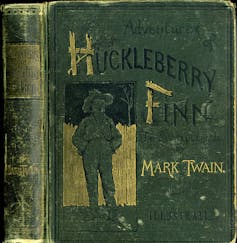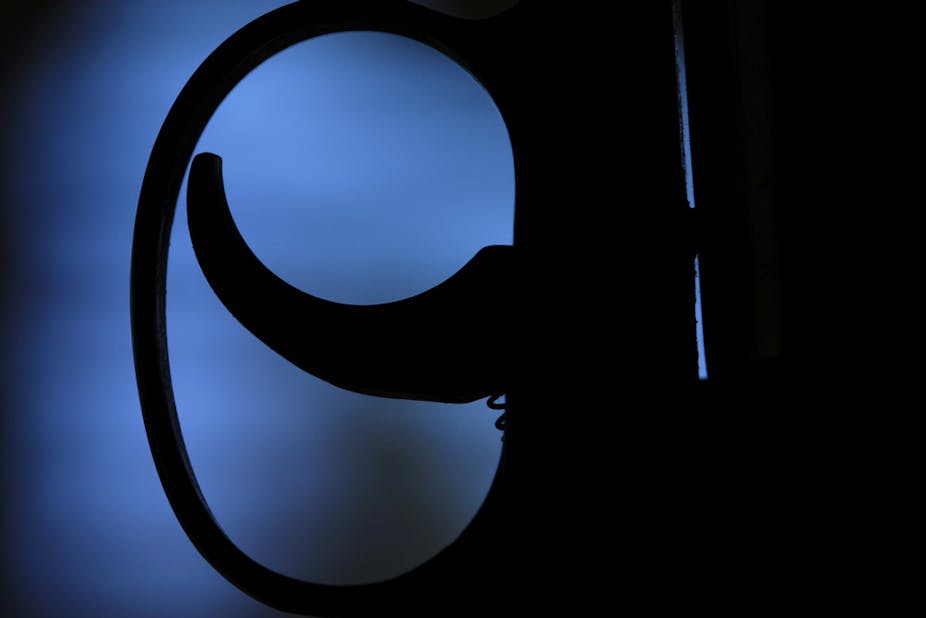If you’ve been involved in internet discussions about sensitive topics like sexual abuse, you may have seen the letters “TW”, short for “trigger warning”. The convention originated primarily on feminist blogs to forewarn readers about content that could aggravate conditions caused by trauma, such as post-traumatic stress disorder. The trigger warning now encompasses a vast range of social wrongs, including racism, sexism, cissexism, ableism, homophobia, and even colonialism.
Trigger warnings have also migrated from Facebook and discussion boards to American college campuses. Students at institutions including the University of California Santa Barbara, Oberlin College, Rutgers University and the University of Michigan have been lobbying for trigger warnings to be recorded in syllabi.
The idea of notifying students in advance before showing graphic or horrifying images or films in class is relatively uncontested. Yet the suggestion that trigger warnings should apply to literary works that examine difficult, challenging or offensive subjects has provoked derision.
Philip Wythe, a student at Rutgers, proposes that F. Scott Fitzgerald’s The Great Gatsby or Virginia Woolf’s Mrs Dalloway could trigger traumatic responses due to their depictions of “abusive and misogynistic violence” and suicidal thoughts. Gatsby, a high-school staple, might be prefaced with “TW: "suicide,” “domestic abuse” and “graphic violence”.
At Oberlin College, a draft trigger warning policy acknowledges the importance of students reading Chinua Achebe’s Things Fall Apart. It also flags the novel’s potential to “trigger readers who have experienced racism, colonialism, religious persecution, violence, suicide and more”.
Shakespeare’s The Merchant of Venice has similarly been mentioned as a text that might be a trigger because of its anti-Semitic content.
One of the ways literature enriches culture is through challenges to accepted ideas and social structures. “Classic” fiction confronts social norms in ways that both align with and reject our current sensibilities.

Mark Twain’s Adventures of Huckleberry Finn encodes the racist language and stereotypes of the antebellum American South, but also humanises the runaway slave Jim, providing some critique, however fraught, of slavery. In Lolita, Vladimir Nabokov’s narrator Humbert Humbert’s perspective on his infatuation and sexual encounters with a 12-year-old girl almost numbs us to the revulsion of paedophilia.
All of the most disturbing aspects of reality are mirrored, critiqued, exaggerated, and distorted in literature. With the gamut of topics now covered by trigger warnings, the majority of texts set for literature classes, especially those written in previous centuries in which racism, sexism and homophobia were culturally ingrained, would require at least one.
Would ubiquity negate the usefulness of warnings for PTSD sufferers? And what about the pitfalls for lecturers who would carry the responsibility for identifying likely triggers contained in every book set for their classes?
The draft Oberlin policy suggests that this task would be impossible: “Anything could be a trigger — a smell, song, scene, phrase, place, person, and so on”.
Whythe suggests that lecturers and tutors could “dissect” books and warn students about “which sections or volumes … possess triggering material and which are safer to read”. This again insists that a lecturer should be charged with determining what kinds of ideas and phrases from novels that might run up to 1,000 pages in length could harm any one of hundreds of students when “anything” could be a trigger.
The aim of trigger warnings is to prevent unanticipated exposure to material that might evoke past experiences of trauma. We can assume that the discovery of racism in a 19th-century novel about slavery or self-harm in the poetry of Sylvia Plath is less of a troubling surprise than an entirely unexpected disturbing image, tweet, or forum post that is not surrounded by the context of a literature course within a university.
Though literature often preserves the unquestioned prejudices of an era like an insect trapped in amber, fiction also has an important critical and radical potential, as does university education. It is partly for this reason that many responses to the calls for trigger warnings on literature syllabi have been less than receptive.
As Tressie McMillan Cottom notes, trigger warnings don’t exist in the broader world in which the disadvantage and marginalisation of particular groups occurs. Instead, she suggests, “trigger warnings are being encouraged for sites of resistance, not mechanisms of oppression”.
While no lecturer would wish to dismiss a student’s mental illness or history of abuse, the benefit of applying a large number of trigger warnings to literature seems questionable.
Literature classrooms are typically places in which the structures that support inequality, violence, and discrimination are routinely questioned and dismantled. Do we want to assign more weight to the negative effects that novels and poetry might evoke by exploring racism, sexism and homophobia, for example, than the benefit of intellectually undoing the social structures that cause traumatic experiences for so many people in the first place?

